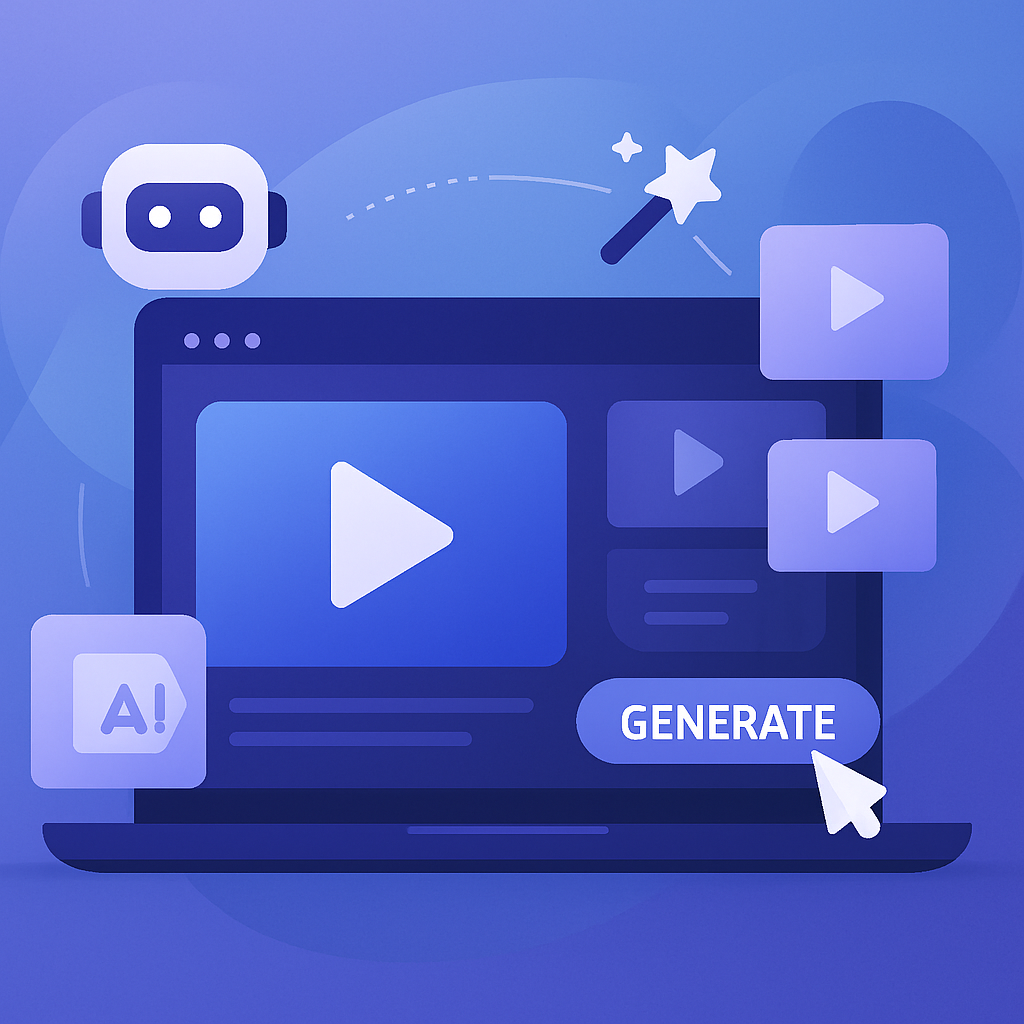
Create AI videos with 230+ avatars in 140+ languages.
Custom tagline
Hiring the best fit for vacant positions in the company is fulfilling.
But onboarding each new employee can be pretty cumbersome both for you and new hires. Onboarding videos are certainly more memorable, though creating these onboarding videos can be time-consuming and costly.
To help you make your company's onboarding process more engaging through video, we have curated the best employee onboarding video examples, tips and facts. As well as an easy step-by-step process to creating your own perfect onboarding video without breaking the bank.
What is an orientation video?
An orientation video (also known as an onboarding video or new hire video) is usually a short video that is shown to new employees. It is designed to give them an overview of the the new job, the company culture, values and policies, and to welcome them to the people and facilities.
Why use video for onboarding?
Why should you train new hires with onboarding videos? Wouldn't the standard text-based or face-to-face employee onboarding process do the job just fine?
Here are 5 reasons why video onboarding is the key to a strong onboarding process.
1. Video is better at keeping attention than written resources
Video is an incredibly powerful tool for capturing and keeping attention. And with attention spans split across a million different channels, it’s important to keep people engaged as much as possible.
Short onboarding videos help new team members get up to speed from the first day:
- Improved comprehension: Better visualize complex topics that would otherwise confuse new hires.
- Improved completion: Keep employees' attention for the entire duration of the video with creative visuals, animations, and audio elements that help break up topics engagingly.
2. Video training helps scale onboarding
The customer engagement platform Dixa was stuck with lengthy onboarding training material that took a manager and new hires 3 days to complete!
Those aren’t numbers that scale well.
So they switched to video. Using Synthesia’s AI video maker, they quickly created engaging onboarding videos that could be used for remote employees. Now, when a new employee joins Dixa’s team, it takes them just one day to get up to speed.
3. Video delivers consistent messaging
Consistency is key to eliminating confusion and ensuring every single new hire receives accurate information about company policies and procedures.
With video, you can create a library of modules and make them available to every employee, no matter where or how far apart they are. Everyone has access to the same materials. Everyone, no matter their location, receives the same onboarding information.
Having consistent messaging from the top down will give employees a sense of belonging and ensure everyone is on the same page.
4. Video is easy to personalize
Video content can be tailored to specific roles and departments, ensuring everyone gets the most relevant information.
For example, video can easily be segmented into different modules, allowing you to create content relevant to each employee’s job requirements. It helps make onboarding more personal and engaging while delivering the same core messages.
5. Video is great for remote onboarding
It's easier to form an emotional connection with the company culture and values when you can see and hear other employees sharing their experiences and perspectives. This can be particularly important for remote teams with less opportunity for in-person interactions and communication.
Onboarding videos help you:
✅ Quickly create and share relevant videos with new hires, regardless of their location.
✅ Ensure that everyone receives the same level of instruction and can hit the ground running as soon as they start work.
✅ Eliminate the need for costly travel expenses or in-person training sessions.
What should an onboarding video include?
The onboarding process aims to create organizational structure, enhance employee engagement, and educate the recruits on high production values.
A practical employee onboarding experience helps people understand their roles and job description and get up to speed as quickly as possible. Here are the core areas to include in employee orientation training.
1. Company history, culture, and values.
Knowing how the company started, what the company values are, and how things operate helps the recruit adjust their behavior and ethics accordingly. It also creates a connection to the company's vision. Insight into the company culture will answer the what, who, and why.
2. Benefits of employment
Each role is different, and while that may be reflected in the salary, there are commonly offered benefits all employees are entitled to, such as access to the company's gym, paid leave, retirement plans, etc.
Including this in the onboarding video creates an awareness of how the company cares for its staff, especially in inspiring a work-life balance. It also provides transparency and incentivization.
3. Company policies and regulations
Company policies and regulations guide the modus operandi of the company every employee should know, and it is your job to include this in the training videos.
4. Roles and goals of each department
While each role may be unique, multiple parts are intertwined within a department. Hence, employees must be educated on broader picture insights. The video must thoroughly convey how each department contributes to the company's growth.
5. Roles of each position and job description
This may be cumbersome to achieve if you're creating video training for everyone. However, investing time in video—or text-based—training will be practical whenever a new team member occupies a role.
10 best employee onboarding video examples
The onboarding video examples listed here are not just for inspiration - they are video templates that you can copy and reuse for your own onboarding video.
The video templates come with a pre-designed layout, example text, and even an AI presenter, so you don't even have to film anything yourself. You adjust every element of the video, choose a different avatar, paste in your own video script, or translate your video.
1. Introduction to your company's culture and values
This is an excellent example of a core welcome video. The video showcases the company's culture and core values. It helps the new hires connect on a personal level within the first few weeks.
Why do we like it?
- The messaging is clear, and the delivery is excellent.
- The warm and friendly tone will facilitate an emotional connection between the new hire and the company.
- A visual representation of employees working together exemplifies what makes it engaging content.
- The layout is simple and facilitates focus.
👉🏻 Click here to duplicate this video
2. Welcome video for new employees
A prime example that doubles as a template, this video can serve as an introduction to the onboarding program. Think of this as a welcome message. A powerful introduction differentiates between a good and a great onboarding video.
Why do we like it?
- The layout is neat but warm. It instantly fosters a welcoming environment for the new employee.
- It's concise and requires minimal effort to customize. A small welcome speech is enough. However, it can be expanded to overview the company's history briefly.
- The video lists the modules and the different aspects the course will cover.
👉🏻 Click here to duplicate this video
3. Understanding company policies and procedures
Looking for a simple and effective video that explains how the company operates in terms of attendance, code of conduct, and compliance with laws and regulations as expected from employees? This video will get the job done. It can be customized to reflect your own company's policies and procedures.
Why do we like it?
- The video content is in-depth yet concise.
- It can be used with very few changes, like the company's name and differences in attendance expectations.
- The delivery is simple, and the messaging is easy to interpret.
👉🏻 Click here to duplicate this video
4. Overview of benefits
This video is particularly important as it incentivizes new hires by listing all the additional benefits apart from salary. This video lets your new employees know that the company is also concerned about their psychological well-being and is invested in their productivity and adequate remuneration.
Why do we like it?
- It strongly suggests that the company cares about its employees. Your company will be perceived as an employee-centric workplace.
- The delivery is clear, concise, and easy to interpret.
- It lists other benefits other than the salary. This lets the new hire know their rights, preventing later miscommunication.
👉🏻 Click here to duplicate this video
5. Company's sustainability initiatives
This video discusses efforts made by the company to contribute meaningfully to the environment. It is a great resource to inform your employees that your company is pro-earth and actively invested in environmental awareness.
Why do we like it?
- The layout is in sync with the message. The visual representation and the audio content appropriately express the video's intent.
- It can serve as a training video for all new team members to inculcate the desire and obligation to adhere to sustainability regulations and practices within the company.
👉🏻 Click here to duplicate this video
6. Introduction to team collaboration
Unsure about which high-quality onboarding video should make up the continuation of onboarding training? This video course on team collaboration fits perfectly. It can be described as the quintessential employee onboarding video example. It offers insight into how new hires can adapt to teamwork to achieve the set goals.
Why do we like it?
- The delivery is simple and fluid.
- The video offers practical insights that can improve employee productivity.
- This extensive mini-course can be added to your onboarding video content as a module.
👉🏻 Click here to duplicate this video
7. Giving and receiving feedback
Learning how to give and receive feedback significantly contributes to scaling employee productivity. This is a great onboarding video that can improve your overall team experience. For the new hires, it sensitizes them early on before they begin to interact with other team members.
Why do we like it?
- It sufficiently encompasses all aspects of feedback. It also teaches how feedback can help an employee up skill.
- The messaging is simple, clear, and concise.
- It can be made into a seven-part module on feedback.
👉🏻 Click here to duplicate this video
8. Company's compliance policies
Notably, this orientation video dives into sexual harassment in the workplace and how to prevent it. It is essential for onboarding new employees, especially if those concerned are not remote workers.
Why do we like it?
- It is suitable for onboarding employees in any role.
- You present the company as a fair workplace concerned with promoting a safe work environment for all staff members.
- The content is engaging, insightful, practical, and comprehensive.
- It can be used as is or customized.
👉🏻 Click here to duplicate this video
9. Asana tool onboarding example
If Asana is one of the tools your team will be required to use, this video is the jackpot! It provides a comprehensive guide on how to use Asana. It can be used as a template for other tools.
Why do we like it?
- It is a practical training video that prepares the new hire beforehand on the tool they'll use to collaborate with other team members.
- It can be used as a template to create other tool-based videos.
- It is concise, clear, and easy to interpret.
👉🏻 Click here to duplicate this video
10. Time management and prioritization
A new-hire video like this one is a no-brainer. Employees must know how to manage their time for their tasks and maintain optimal productivity. This video shows how to prioritize and apportion time to tasks.
Why do we like it?
- It is an effective video because it teaches practical ways to manage time.
- Regardless of the industry or career path, the video is useful.
- The messaging is clear, simple to understand, and fluid.
👉🏻 Click here to duplicate this video
Now that you have seen these great onboarding videos, you can curate a thorough employee onboarding video course for your new hires. To ensure you organize successful onboarding training, check that the following aspects are covered.
4 tips for creating stunning employee onboarding videos
1. Introduce the company culture 👋
Use employee onboarding videos to showcase your company's history and impressive culture, outline your company vision and values, and introduce the upper management to the new hires.
This is the time where you set the core values and principles of working for your organization. Let your new employees know what's important to you. Does your business value collaborative or independent thinking? What is the work environment like? What goals are you trying to achieve with the business?
2. Make it fun 🎉
Let's face it, sometimes practical information can be.... well, boring.
Don't lose the attention span of your new employees. Make the onboarding experience fun, light, and engaging. A few ways to do that:
- add graphic elements
- incorporate some personality and humor
- include testimonials/examples from various members of the team
3. Keep it short ✂️
An employee onboarding video is not the optimal medium for bombarding your hires with too much at once. In fact, videos longer than 2 minutes see a significant drop in engagement.
Information about their specific roles, the strategy of each department, product/process training should not be included in a welcome video. We recommend separating those topics into short separate videos, and include all of them in a well-formulated employee onboarding course.
4. Personalize! 💌
Few things can make a new employee feel more welcome than a personalized employee onboarding video from the CEO.
We know what you're thinking: filming new hire videos for all new employees, especially at a big company, is an impossible task. Just think of all the time it will take, and all the money that will be involved in the entire process.
And that is absolutely the case if you use a traditional video production company for the job. But there are tools on the market that allow you to make personalized professional videos from text in minutes with life-like AI avatars of your team members.
Use these examples for your next onboarding video
The examples in this article can be used as templates. Simply click 'Duplicate' below the video and edit the video to your needs.
AI tools like Synthesia make video creation seamless - try the free AI video maker and make effective onboarding videos with zero technical knowledge today.











